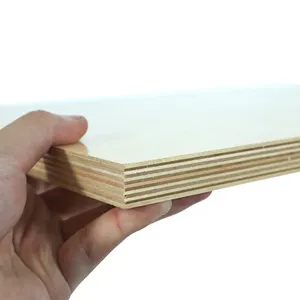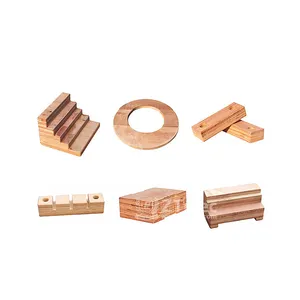Top categories

Prefabricated Buildings

Countertops, Vanity Tops & Table Tops

Building & Industrial Glass

Mosaics

Metal Building Materials

Multifunctional Materials

Ladders & Scaffoldings

Mouldings

Corner Guards

Decorative Films

Formwork

Other Construction & Real Estate

Soundproofing Materials

Timber

Waterproofing Materials

Building Boards
About products and suppliers
Birch Wood Finger Joint Boards: An Overview
Birch wood finger joint boards are a versatile and sustainable option for various applications, including furniture making and construction projects. Crafted from the resilient birch tree, these boards are known for their uniformity and strength, making them a preferred choice in the woodworking industry.
Types and Applications
The diversity of birch wood finger joint boards allows for their use in a range of scenarios. From creating elegant furniture to sturdy construction partitions, these boards are adaptable to both aesthetic and structural needs. The variety of dimensions available ensures that they meet the specific requirements of different projects.
Features and Materials
Birch wood finger joint boards are distinguished by their smooth surface and consistent moisture content, which contributes to their longevity. The finger joint technique used in these boards enhances their stability, allowing for a broader range of applications without compromising on durability.
Advantages of Birch Wood Boards
One of the main advantages of using birch wood finger joint boards is their environmental friendliness. As a biodegradable material, birch wood is a responsible choice for those looking to minimize their ecological footprint. Additionally, the precision in the manufacturing of these boards ensures a snug fit and a polished finish in the final product.
Customization and Sustainability
Clients seeking specific requirements can find customization options for birch wood finger joint boards, allowing for a personalized touch in their projects. The commitment to sustainability is evident in the production of these boards, aligning with the growing demand for eco-conscious materials in the industry.
Choosing the Right Birch Wood Board
Selecting the appropriate birch wood finger joint board involves considering the wood grade and the intended use to ensure the board meets the project's demands. Factors such as plank dimensions and thread patterns play a significant role in the board's suitability for a particular application.
























 浙公网安备 33010002000092号
浙公网安备 33010002000092号 浙B2-20120091-4
浙B2-20120091-4